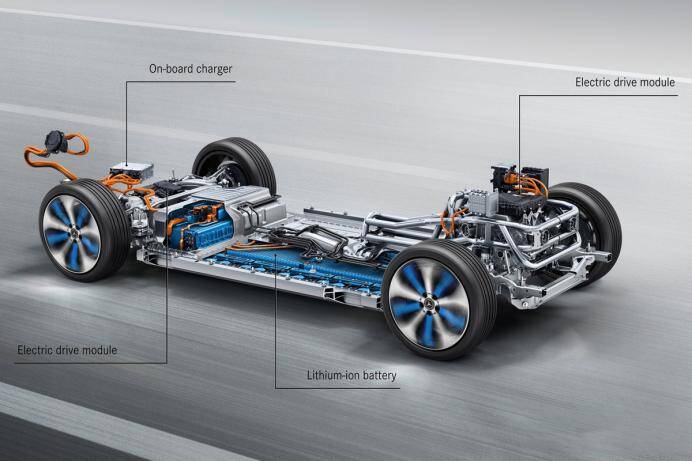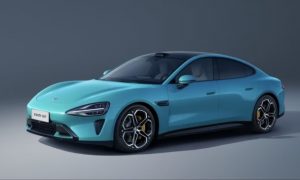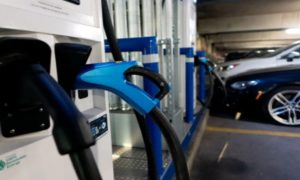Car brochures and blurbs will find any kind of numbers to try and persuade consumers to why their cars are better than their rivals. While they do provide good yardsticks, some of them are irrelevant to the consumer.
Automakers around the world will show you incredible amounts of data about their vehicles. Whether it is at the product’s launch or in a brochure. Car adverts and more are littered with technical specifications. It is a practice that has been followed for over a century. With electric vehicles coming into the pictures, it brings along even more technical specifications to wrap our heads around. While some specifications are important for the consumer to pay attention to and know what it means, some can be completely irrelevant. But there are a few that you need to care about and focus on.
This is a list that tells you about the most used technical jargons and what they mean. We hope that this will help you make smarter choices at the dealership (or online) when buying an EV.
Horsepower: Horsepower is an archaic metric used to determine how much power an engine makes. The theory behind the measurement is the effort made by a horse to lift 250kgs one foot off the ground in one second. It dates back to the 18th-century in fact. That is why it’s simpler to denote it by the kW instead. For the average consumer, horsepower is not very relevant.
Torque: Torque is basically the twisting force being applied. The number determines how hard the motor in the vehicle can twist something and that is exactly what makes the vehicle move. In an EV, we usually don’t find transmissions as most of them are direct drives. So the twisting force that the electric motor applies is direct to the direct drive in the axles that turn the wheels. Torque is measured in kg/m, lb/ft, or the most popular Newton/Metres (Nm). How it is exactly measured is a bit complicated. All a consumer needs to know that the higher the number, the faster and easier your car can accelerate. In electric cars, the nature of electric motors allow them to deliver all their torque right from 0 rpm, and that is why electric cars are so quick to accelerate off-the-line.
Read More ; Top Upcoming Electric Cars to Launch in India in 2021: Tesla Model 3, Tata Altroz EV and More
kWh: This is a measure of battery capacity. A battery with 1 kWh capacity means that the battery can generate 1,000 Watts for an hour before it goes flat. If a vehicle has a 60kWh battery, it means it can deliver 1 kW for 60 hours, or 60 kW for 1 hour or 30kW for 2 hours, and so on. The kWh gives you a rough estimate of what kind of range you can get from an electric vehicle. It also tells you how efficient the electric motor is and how long it could take to charge up the battery.
0-100km/h: 0-100 km/h is a standardised test number of how quickly a car can accelerate from standstill to 100 km/h. It is a benchmark many automakers use as bragging rights for their performance cars, and sometimes, they take it way too seriously. But in the real world, no one really drives from 0-100 km/h. it is a good yardstick, but not something that should be a deal breaker when buying a vehicle, let alone an electric vehicle. You can use the Ludacris Mode in a Tesla Model S and experience the acceleration only a few times before the novelty eventually wears off.
Coefficient of Drag (CD): This is something that many automakers have been flaunting in recent years. Carmakers work tirelessly to lower CD number of a vehicle. Even a tiny amount of lowering the CD can help extract performance. The CD value determines how easily the car can cut through the air and glide through with our friction and turbulence, which holds it back. A lower CD-level can be beneficial towards higher top speed, improved fuel efficiency, and lower wind noise. But if you just pay attention to the top speed, fuel efficiency and wind noise… you don’t really need to worry about the CD level of a vehicle.
Read More ; Important Things To Check When Buying A Used Motorcycle
Range: Nothing is really more important to know about an electric car than its range. The range is essentially how far can your vehicle be driven on a single charge of the battery. The numbers usually advertised by manufacturers are from tests done in a laboratory. Real world performance can differ depending on many factors and variables. The range of an EV is scientifically determined by the size of the battery, while the drag coefficient and the rolling resistance from tyres have some work in them as well. But how you drive also has a significant impact too. If you ask for more power with hard acceleration, you will see your range drop faster, but if you’re careful and use the regenerative braking to re-cooperate some energy from the recovery system found in most modern EVs, you can help extend that range. So pay attention to the number, but take it with a grain of salt.
Read More ;New Maruti Rs 9 Lakh SUV to come soon?
Charging Time: The charging time is self-explanatory. It helps you understand how long will a given vehicle will take to charge up its battery to its full capacity. There are many methods of charging like slow charging that is determined as the safest and helps in the longevity of the battery and can use the regular 3-pin socket you can find at home. Fast charging requires DC convertors that help charge up the batteries much faster, whether on-board the vehicle or externally. However, the time will always depend on the power of the charger and the battery capacity of the vehicle. The larger the battery size, the longer it will take. So a large battery will give you more range but will take longer to charge, but a smaller battery will give you a shorter travel distance but will charge up slightly quicker. It is that balance you need to figure out for your requirements.
The demand for electric vehicles in India is slowly and gradually growing. It is said that public transport and shared mobility will see the adoption of EVs sooner than private vehicle ownership. In India, there are many startup companies that will sell anything from a sub-par product to some impressive products in the EV two-wheeler space. But when it comes to personal vehicles, choices are limited to the Tata Nexon EV, MG ZS EV, and the Hyundai Kona Electric at the “affordable” end. But luxury players like the Mercedes-Benz EQC and the Jaguar I-Pace are already here, with Audi and Volvo joining in very soon. Eventually, there will be more EV models in the Indian market. While it may take longer in India than other countries to create the infrastructure and get the results the reality is that EVs are the next generation of mobility and transportation.

































